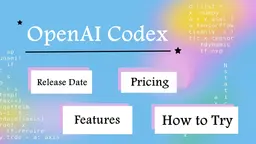如何使用 Genesis
安裝前置條件: 安裝 Python 3.9 或更高版本和 PyTorch,並按照 pytorch.org 的官方 PyTorch 安裝說明進行安裝
安裝 Genesis: 在終端/命令提示符中運行 'pip install genesis-world' 以安裝 Genesis 包
導入所需模塊: 在您的 Python 腳本中導入 Genesis 模塊。具體導入的模塊取決於您要使用的功能(物理引擎、渲染等)
設置模擬環境: 使用 Genesis 的物理引擎創建模擬環境。您可以使用支持的文件格式(如 MJCF (.xml)、URDF、.obj、.glb、.ply 或 .stl)加載機器人模型
配置物理參數: 設置模擬的物理參數,包括求解器類型(剛體、MPM、SPH、FEM、PBD 或穩定流體),具體取決於您的需求
添加對象和材料: 向模擬環境中添加對象並指定其材料屬性。Genesis 支持多種材料,包括剛體、液體、氣體、可變形對象和顆粒材料
設置渲染: 如果需要可視化,配置渲染設置。Genesis 支持基於光柵化的渲染和光線追蹤以實現照片級真實效果
運行模擬: 執行您的模擬。Genesis 可以在支持的硬件(RTX 4090)上以非常高的速度運行,最高可達 4300 萬 FPS
訪問文檔: 參閱 genesis-world.readthedocs.io 的官方文檔,以獲取詳細的 API 參考和高級功能教程
獲取支持: 使用 GitHub Issues 進行錯誤報告和功能請求,或使用 GitHub Discussions 進行一般問題和想法討論
Genesis 常見問題
Genesis 是一個為通用機器人、具身 AI 和物理 AI 應用設計的全面物理平台。它結合了通用物理引擎、用戶友好的機器人模擬平台、照片級真實渲染系統和生成數據引擎,可以將自然語言描述轉換為各種數據模式。
查看更多












